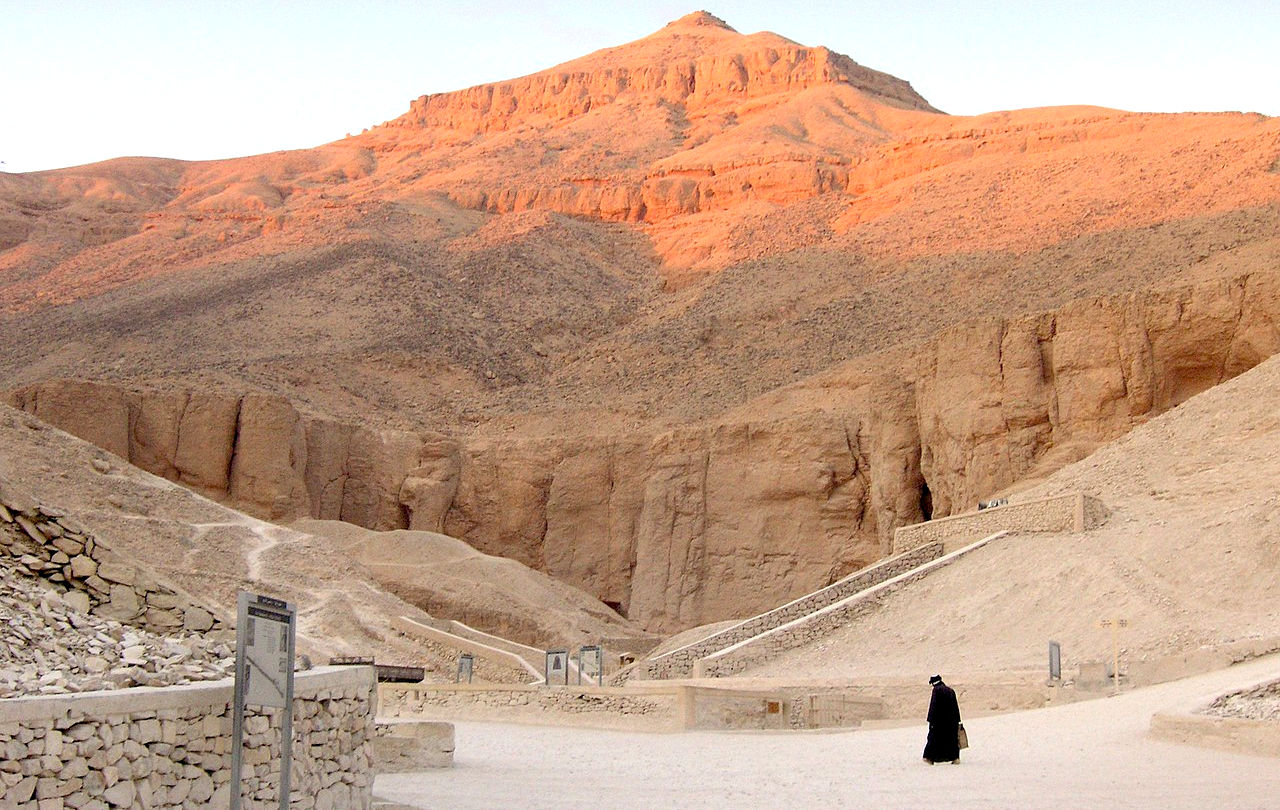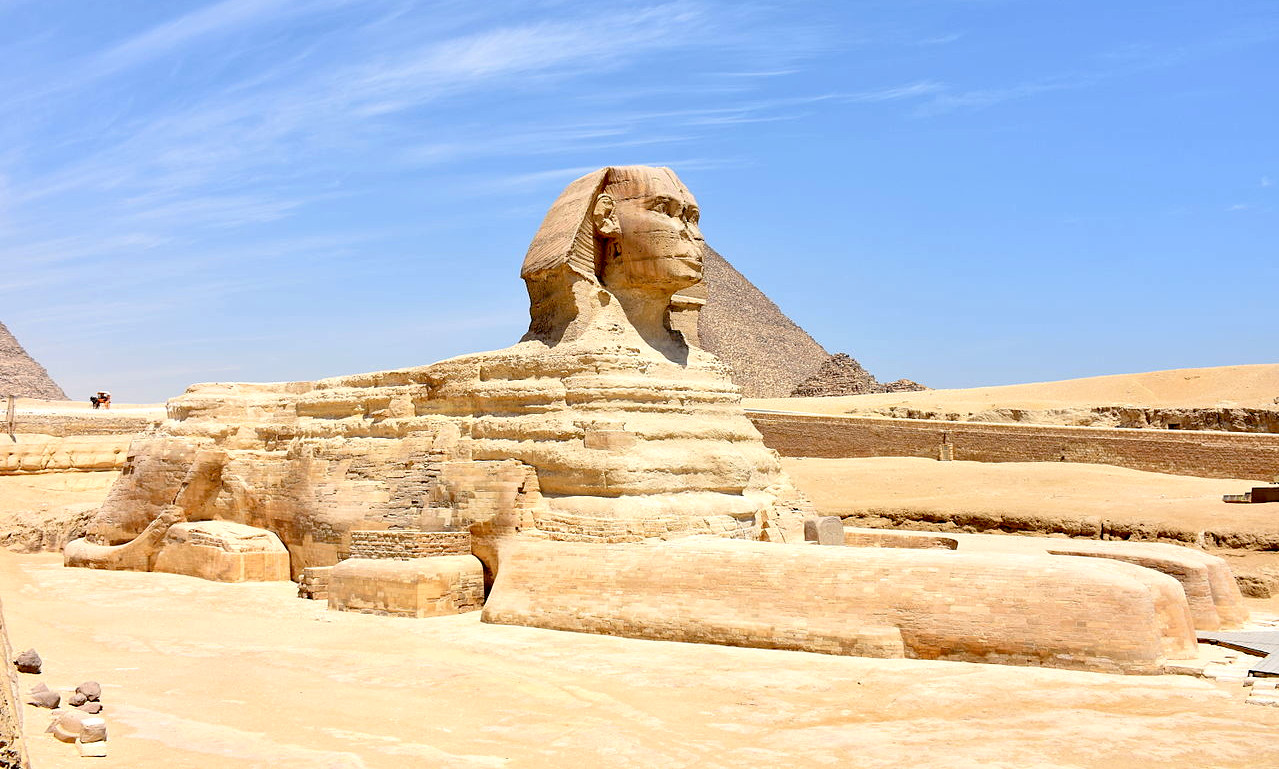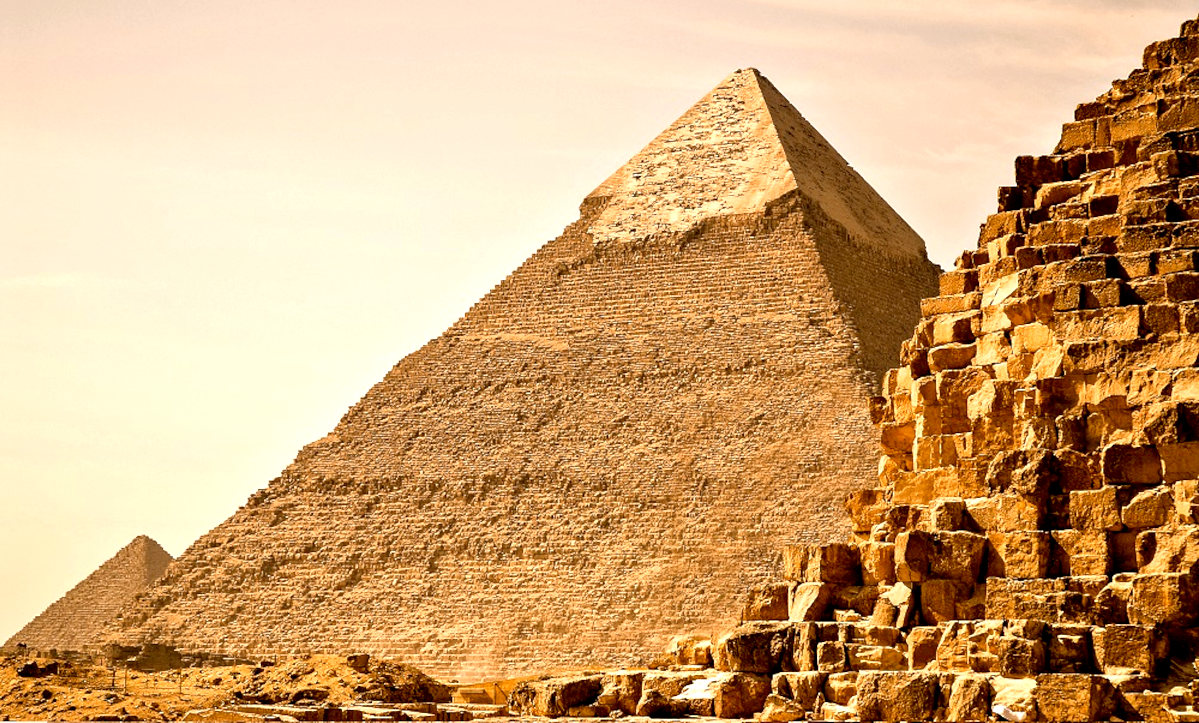The ancient Egyptians spent a lot of time creating hidden underground mausoleums, filled with treasure.
The most famed collection of such elaborate tombs is called "Valley of the Kings," located on the river Nile's west bank near Luxor.
The tombs evidence elaborate preparations for the next world, in which humans were promised continuing life and pharaohs were expected to become one with the gods.
Mummification
was used to preserve the body so that the deceased's eternal soul would be able to reanimate it in the afterlife.
The Valley of the Kings is a geographical location in Egypt where, for a period of nearly 500 years from the 16th to 11th century BC, rock-cut tombs were excavated for the pharaohs and powerful nobles of the New Kingdom (the Eighteenth to the Twentieth Dynasties of
Ancient
Egypt).
The valley stands on the west bank of the river
Nile opposite Thebes (modern Luxor), within the heart of the Theban Necropolis. The wadi consists of two valleys: the East Valley (where the majority of the royal tombs are situated) and the West Valley (Valley of the Monkeys).
With the 2005 discovery of a new chamber and the 2008 discovery of two further tomb entrances, the valley is known to contain 63 tombs and chambers (ranging in size from KV54, a simple pit, to KV5, a complex tomb with over 120 chambers). It was the principal burial place of the major royal figures of the Egyptian New Kingdom, as well as a number of privileged nobles. The royal tombs are decorated with scenes from Egyptian mythology and give clues as to the beliefs and funerary practices of the period. Almost all of the tombs seem to have been opened and robbed in antiquity, but they still give an idea of the opulence and power of the pharaohs.
This area has been a focus of archaeological and Egyptological exploration since the end of the eighteenth century, and its tombs and burials continue to stimulate research and interest. Since the 1920s, the valley has been famous for the discovery of the tomb of Tutankhamun, and is one of the most famous archaeological sites in the world. In 1979, it became a World Heritage Site, along with the rest of the Theban Necropolis. Exploration, excavation and conservation continues in the valley, and a new tourist centre has recently been opened.

A
map of the Valley of Kings, showing many of the discovered tombs,
designated by the prefix: KV.
The valley has been a major focus of modern Egyptological exploration for the last two centuries. Prior to this time, it was a site for tourism in antiquity (especially during Roman times). The area illustrates the changes in the study of ancient Egypt, starting as antiquity hunting, and ending as scientific excavation of the whole Theban Necropolis. Despite the exploration and investigation noted below, only eleven of the tombs have actually been completely recorded.
Many of the tombs have graffiti written by those ancient tourists. Jules Baillet has located over 2,100 Greek and Latin instances of graffiti, along with a smaller number in Phoenician, Cypriot, Lycian, Coptic, and other languages. The majority of the ancient graffiti is found in KV9, which contains just under a thousand of them. The earliest positively dated graffiti dates to 278 B.C.
In 1799, members of Napoleon's expedition to Egypt (especially Vivant Denon) drew maps and plans of the known tombs, and for the first time noted the Western Valley (where Prosper Jollois and Édouard de Villiers du Terrage located the tomb of Amenhotep III, WV22). The Description de l'Égypte contains two volumes (out of a total of 24) on the area around Thebes.
European exploration continued in the area around Thebes during the nineteenth century. Early in the century, the area was visited by Giovanni Belzoni, working for Henry Salt, who discovered several tombs, including those of Ay in the West Valley (WV23) in 1816 and Seti I (KV17) the following year. At the end of his visits, Belzoni declared that all of the tombs had been located and nothing of note remained to be found. Working at the same time was Bernardino Drovetti, the French Consul-General and a great rival of Belzoni and Salt. John Gardner Wilkinson, who lived in Egypt from 1821 to 1832, copied many of the inscriptions and artwork in the tombs that were open at the time. The decipherment of hieroglyphs, though still incomplete during Wilkinson's stay in the valley, enabled him to assemble a chronology of New Kingdom rulers based on the inscriptions in the tombs. He also established the system of tomb numbering that has been in use, with additions, ever since.
The second half of the century saw a more concerted effort to preserve, rather than simply gather, antiquities. Auguste Mariette's Egyptian Antiquities Service started to explore the valley, first with Eugène Lefébure in 1883, then Jules Baillet and Georges Bénédite in early 1888, and finally Victor Loret in 1898 to 1899. Loret added a further 16 tombs to the list, and explored several tombs that had already been discovered. During this time Georges Daressy explored KV9.
When Gaston Maspero was reappointed as head of the Egyptian Antiquities Service, the nature of the exploration of the valley changed again. Maspero appointed English archaeologist Howard Carter as the Chief Inspector of Upper Egypt, and the young man discovered several new tombs and explored several others, clearing KV42 and KV20.
Around the start of the 20th century, American explorer Theodore M. Davis had the excavation permit for the valley. His team (led mostly by Edward R. Ayrton) discovered several royal and non-royal tombs (including KV43, KV46 and KV57). In 1907, they discovered the possible Amarna Period cache in KV55. After finding what they thought was all that remained of the burial of Tutankhamun (items recovered from KV54 and KV58), it was announced that the valley was completely explored and that no further burials were to be found. Davis's 1912 publication, The Tombs of Harmhabi and Touatânkhamanou closes with the comment, "I fear that the Valley of Kings is now exhausted."
After Davis's death early in 1915, Lord Carnarvon acquired the concession to excavate the valley, and he employed Howard Carter to explore it. After a systematic search, they discovered the actual tomb of Tutankhamun (KV62) in November 1922.
Various expeditions have continued to explore the valley, adding greatly to the knowledge of the area. In 2001 the Theban Mapping Project designed new signs for the tombs, providing information and plans of the open tombs.

..
TOMB NUMBERING
The modern abbreviation "KV" stands for "Kings' Valley". In 1827, Wilkinson painted KV numbers over the entrances to the 21 tombs that lay open in the East Valley at that time, beginning at the valley entrance and moving southward, and labeled four tombs in the West Valley as WV1 through WV4. The tombs in the West Valley were later incorporated into the East Valley numbering system as WV22 through WV25, and tombs that have been opened since Wilkinson's time have been added to the list. The numbers range from KV1 (Rameses VII) to KV64 (discovered in 2012). Since the early 19th century AD, antiquarians and archaeologists have cleared and recorded tombs, with a total of 61 sepulchers being known by the start of the 20th century. KV5 was only rediscovered in the 1990s after being dismissed as unimportant by previous investigators. Some of the tombs are unoccupied, others remain unidentifiable as regards to their owners, and still others are merely pits used for storage. Most of the open tombs in the Valley of the Kings are located in the East Valley, and this is where most of the tourist facilities are located.
MINOR TOMBS
The majority of the 65 numbered tombs in the Valley of the Kings can be considered as minor tombs, either because at present they have yielded little information or because the results of their investigations were only poorly recorded by their explorers. Some have received very little attention or were only cursorily noted. Most of these tombs are small, often consisting of only a single burial chamber accessed by a shaft or staircase with a corridor or a series of corridors leading to the chamber.
Nonetheless, some are larger, multiple-chambered tombs. These minor tombs served various purposes: some were intended for burials of lesser royalty or private burials, some contained animal burials, and others apparently never received a primary burial. In many cases these tombs also served secondary functions, and later intrusive material has been found related to these secondary activities. While some of these tombs have been open since antiquity, the majority were discovered in the 19th and early 20th centuries during the height of exploration in the valley.
TOMB ROBBERS
Almost all tombs throughout Egypt have been robbed. Several papyri have been found that describe the trials of tomb robbers. These date mostly from the late Twentieth Dynasty. One of these, Papyrus Mayer B, describes the robbery of the tomb of Ramesses VI and was probably written during year eight or nine of Ramesses X, around 1118BC.
"The foreigner Nesamun took us up and showed us the tomb of King Ramesses VI ... And I spent four days breaking into it, we being present all five. We opened the tomb and entered it. ... We found a cauldron of bronze, three wash bowls of bronze ..."
Confessing to their crimes the thief goes on to add that a small quarrel arose amongst the robbers when it came to equally dividing the spoils collected from the tomb.
Tombs were filled with valuables, therefore a prime motivation to rob them. Thieves often looted the chambers and bodies of mummies and took with them precious metals and stones, the most common gold and silver, linens and ointments or unguents. Often tombs were robbed when they were still fresh because many of the valuables buried with the mummies were perishable.
The valley also seems to have suffered an official plundering during the virtual civil war, which started during the reign of Ramesses XI. The tombs were opened, all the valuables were removed, and the mummies were collected into two large caches. One in the tomb of Amenhotep II, contained sixteen, and others were hidden within Amenhotep I's tomb. A few years later most of them were moved to the Deir el-Bahari cache, containing no fewer than forty royal mummies and their coffins. Only tombs whose locations were lost (KV62, KV63 and KV46, although both KV62 and KV46 were robbed soon after their actual closure) were undisturbed during this period.
The oldest of the seven wonders of the world, the Pyramid of Giza, was built by King Khufu the most powerful ruler of the Old Kingdom. In the largest of the pyramids a system of tunnels was put in place to deter thieves from robbing the tomb. Sources suggest that until the ninth century AD the pyramid remained sealed untouched by robbers, however these intruders also imply that once in the King's chamber they saw the mummy had been taken and the sarcophagus opened. Tombs were ransacked for their valuables but also for their original primary purpose. Once robbed, an empty tomb could be used as a burial place for another mummy, which is exactly what happened in the smallest of the pyramids of
Giza.

TOURISM
Most of the tombs are not open to the public (18 of the tombs can be opened, but they are rarely open at the same time), and officials occasionally close those that are open for restoration work. The number of visitors to KV62 has led to a separate charge for entry into the tomb. The West Valley has only one open tomb—that of Ay—and a separate ticket is needed to visit this tomb. The tour guides are no longer allowed to lecture inside the tombs, and visitors are expected to proceed quietly and in single file through the tombs. This is to minimize time in the tombs and prevent the crowds from damaging the surfaces of the decoration.
In 1997, 58 tourists and four Egyptians were massacred at nearby Deir el-Bahari by Islamist militants from
Al-Gama'a al-Islamiyya. This led to an overall drop in tourism in the area.
On most days of the week an average of 4,000 to 5,000 tourists visit the main valley. The West Valley is much less visited, as there is only one tomb that is open to the public.
